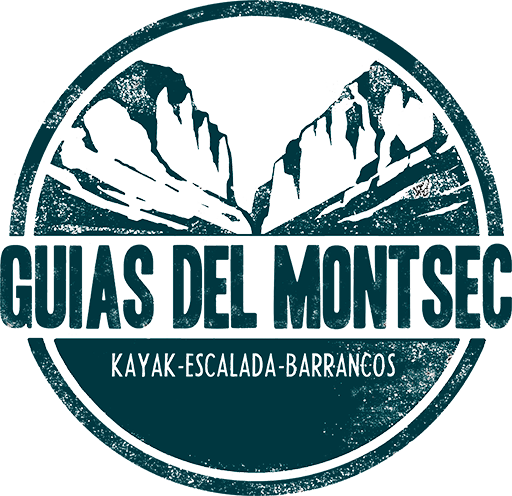Inicio / Natural Attractions
Natural Attractions
Montfalcó Hostel’s surroundings offer visitors endless possibilities for activities, and there’s something for all tastes, whether cultural, natural or sporting. Both Aragón and Catalonia have plenty to offer in this regard, with Ribagorza County boasting a plethora of unique landscapes and natural wonders that have resulted in the area being granted special protection status in order to ensure it kept in perfect conditions for generations to come.
Here are just a few of the natural attractions awaiting you:
Canelles Reservoir
The reservoir collects water from the middle sections of the Noguera Ribagorzana and the Guart rivers.
Protection Status: None
Although the main purpose of the reservoir is to produce electrical energy, its waters can be used to sail and swim in; however, these activities are limited due to the lack of access points. With regards fishing, the Government of Aragón classed the reservoir as an official fishing reserve in its order dated 17 January 1996. It has a total surface area of 1,569 ha. Mont-Rebei Gorge, an area of natural interest that is home to an otter preserve, is found towards the bottom of the reservoir.
Access Points
- Montfalcó pier
- Access ramp in Corçà
- Pier and access ramp in Blancafort
Cajigar Gorge
A very narrow limestone gorge with ponds and boulders wedged between walls.
Protection Status: Place of Geological Interest (PIG)
Little-known gorge exhibiting prime examples of what water and the weather are capable of doing over centuries. Its shadowy passages remain dark even when the sun is high overhead, for which reason it has earned the name the “Darkness of the Cajigar River”.
Location: The Cajigar River, between Tolva and Ciscar
Mont-Rebei Gorge
A natural border between Aragón and Catalonia
Protection Status: Place of Community Importance (LIC), Place of Geological Interest (PIG)
The River Noguera Ribagorzana is the gateway to the southern territory, piercing through the enormous limestone walls of the Sierra del Montsec, towering over 300 metres tall. Acting as a natural border between Aragón and Catalonia, around these vertical walls made of rock from the Upper Cretaceous period, you can spot all kinds of amazing birds of prey, such as bearded vultures, griffon vultures, Egyptian vultures, golden eagles and falcons, which have turned this area into their hunting ground.
Location: In the River Noguera Ribagorzana, between Puente de Montañana and Canelles Reservoir.
Vertical Strata at Finestras
An unbelievable rocky landscape
Protection Status: Place of Community Important (LIC), Place of Geological Interest (PIG)
As rock strata erode over time, particularly when layered vertically, the result is breathtaking. With the harder layers jutting out, they create natural walls, sometimes spectacularly so, such as those found at Finestras Castle. These ridges are the outcome of erosion of fractured rocks.
What has happened here is that the erosion has controlled the layout and intensity of the fractures.
Location:Near Finestras and Canelles Reservoir
Sierra de Montgay
The Sierra de Montgay forms part of the Central Pyrenean foothills.
Protection Status: Special Protection Area for Birds (SPA), Place of Community Importance (LIC)
The mountain range is one of the most southern parts of the foothills of the Central Pyrenees.
Split in two by the course of the River Noguera Ribagorzana, the area is home to endangered endemic species of plants, the southernmost population of bearded vultures in Aragón, as well as a small collection of griffon vultures. You can also spot various other birds of prey, such as the golden eagle, Egyptian vulture, peregrine falcon, black kite, red kite, short-toed eagle, booted eagle and Eurasian eagle-owl.
Bonelli’s eagle has recently gone extinct in a neighbouring region. Countless species of birds can also be found, including woodlarks, common swifts, pipits, currucas, dunnocks, shrikes, larks, chiffchaffs, wheaters and Eurasian hoopoes.
Access Points: From the N-230, follow signs for Chiriveta and Montgay.
Estaña Lakes
Unique space with great geologic and structural complexity
Protection Status: Place of Community Importance (PIC), Singular Wetlands
Unique space with great geologic and structural complexity, located in the foothills of the Pre-Pyrenees in Huesca province.
These lakes are comprised of three basins with variable ponding levels and a fourth which has a build-up of silt. The flora is dominated by countless dryland plants including evergreen oaks, kermes oaks and junipers, though in the areas with greater soil quality, these may be substituted by well-kept Portuguese oaks.
The areas that have been most devastated by farming mostly consist of mixed shrubland with boxwood, junipers and rosemary.
Access Points:From Estopiñán del Castillo
Fig Cave
A cave that is both a natural and sociological wonder
Protection Status: None
Fig Cave is located at Canelles Wall, found in a nook in the rock where the townspeople used to leave their figs to dry.
Access Points:The path veers off from the track that leads down to the pier, and you’ll reach it in one kilometre.




